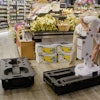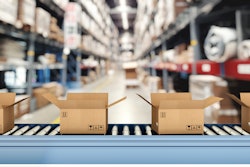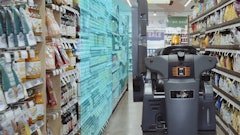The online grocery business is heating up once again, with a very big player quietly entering the arena-Amazon.com.
This past summer, the company began delivering groceries to select suburbs in the Seattle area. Dubbed Amazon Fresh, the service offers fruits and vegetables, fresh, frozen and non-perishable items and an assortment of natural, organic and specialty brands. Orders are filled at a refrigerated warehouse outside Seattle, placed in temperature-controlled totes and delivered by one of Amazon's 12 trucks. That's right, no UPS-Amazon is handling its own transportation.
The company is offering a pre-dawn delivery option that appears to be a big hit with customers. Place an order online by 9:00 p.m. and find your groceries on your doorstep the next morning. Just like the milkman. It's a great idea, since Amazon can max out its trucks and routes and avoid traffic-and have an eight-hour delivery window. Groceries can also be delivered during designated times during the day or picked up locally.
Amazon is testing the concept; company officials have not commented on when, or if, they will expand the service. But in recent years, the company has been increasing its food offerings on its Web site, starting with gourmet foods in 2003. Last year, Amazon opened its Grocery Store, which delivers food in conjunction with local merchants. Books and CDs may come and go, but everybody's got to eat, right?
This isn't Amazon's first venture into the online grocery world-in 1999, the company invested more than $42 million in HomeGrocer.com, which serviced the Seattle and Portland, OR suburbs. HomeGrocer.com was purchased by Webvan Group for $1.2 billion and we all know how that ended.
You might wonder why Amazon would want to go where so many others have failed. It turns out, Webvan and the rest were ahead of their time. The online grocery business is actually booming. Jupiter Research predicts that the segment will grow 15 percent annually over the next five years. Online grocery sales rose 32 percent to $4.4 billion in 2006 and are expected to climb to $5.5 billion in 2007.
Leaders include Peapod, a division of Ahold. Peapod, the most successful online grocer, reports an annual sales growth rate of 25 percent and has delivered more than 10 million orders. Fresh Direct, a pure play which serves the New York City metropolitan region, has delivered more than 5 million orders. These are just two of the seemingly successful online grocers that are figuring out how to make it work.
Can Amazon compete with these companies? It's hard to say. Amazon has a strong reputation and brand recognition goes a long way. Why not order some groceries while you're buying other stuff on Amazon.com? But, we all know that the last mile is the toughest-especially when it comes to perishable and temperature-controlled products. It will be interesting to see if Amazon takes it to the next level.



















